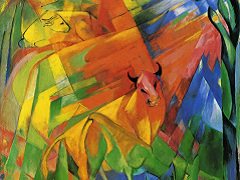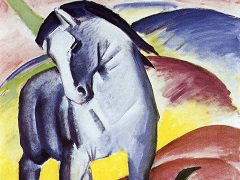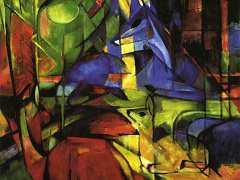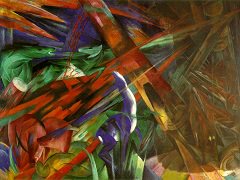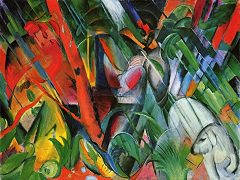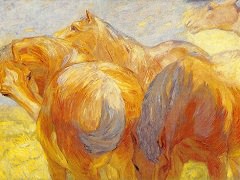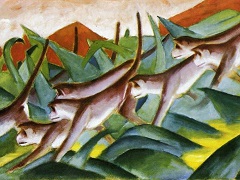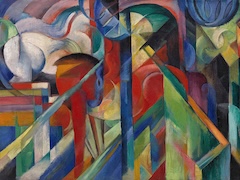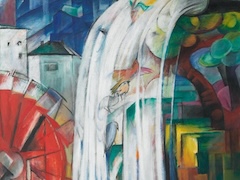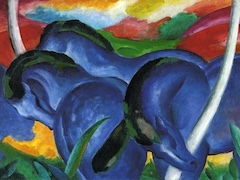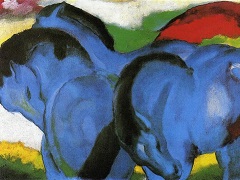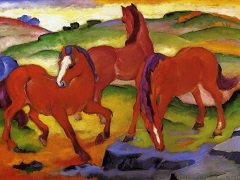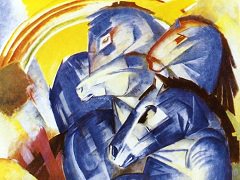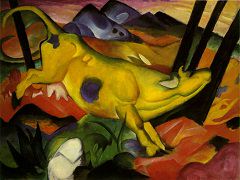The Red Horses by Franz Marc

By early 1911 Marc had already developed a symbolism for his use of color. In this, he followed a pattern established by an early-nineteenth-century German Romantic painter, and Marc's friend Kandinsky. Marc ascribed spirituality and maleness to blue, femininity and sensuality to yellow, and terrestrial materiality to red. The context in which Marc worked suggests he employed these correspondences programmatically, for Kandinsky was extremely serious about color symbolism, and the Symbolists, with whom Kandinsky and Marc had much in common, were likewise interested in such ideas. Marc wrote:
Every color must say clearly 'who and what it is, and must, moreover, be related to a clear form."
Such strength of purpose is particularly apparent in the paintings of 1911.
In Red Horses, the depiction is sufficiently simplified so as to allow the color to be paramount. The dynamic red of the horses suggested that Marc intended to emphasize an earthly orientation for this particular group of animals.
The white area surmounting the pyramidally arranged horses can be understood as symbolizing purity or solace in comparison to the rest of the canvas. To interpret Marc's use of green in the upper third of the painting with regard to his thoughts on
color is also enlightening. He said that once green in introduced, "You never entirely bring the eternally material, brutal red to rest." In that spirit, the horses seem nervous beyond all possibility of resolution. Only the blue, as Marc prescribed,
lends a peaceful note to the agitated atmosphere.
while Marc has employed in Red Horses an absolutely arbitrary palette, he has not sought to flatten color to planes as the Fauves had done. Rather, he retains an illusionistic portrayal within which he seeks to form a rich color composition that
reflects the vitality of his subject. The principal achievement in Red Horses is this depiction of the uninhibited energy of nature using completely naturalistic colors. Vitality by viutue of a coloristic boldness recalls
Henri Matisse, particularly in The Dance, a works chosen by Marc and Kandinsky sometime in 1911 for reproduction in the yearbook
of the Blue Rider group, entitled Der Blaue Reiter. As in Matisses's canvas, unification of figure and ground is accomplished by repeating curves; the effect of a dance in the arrangement of the horses can be confirmed by an
earlier versions of this work.

